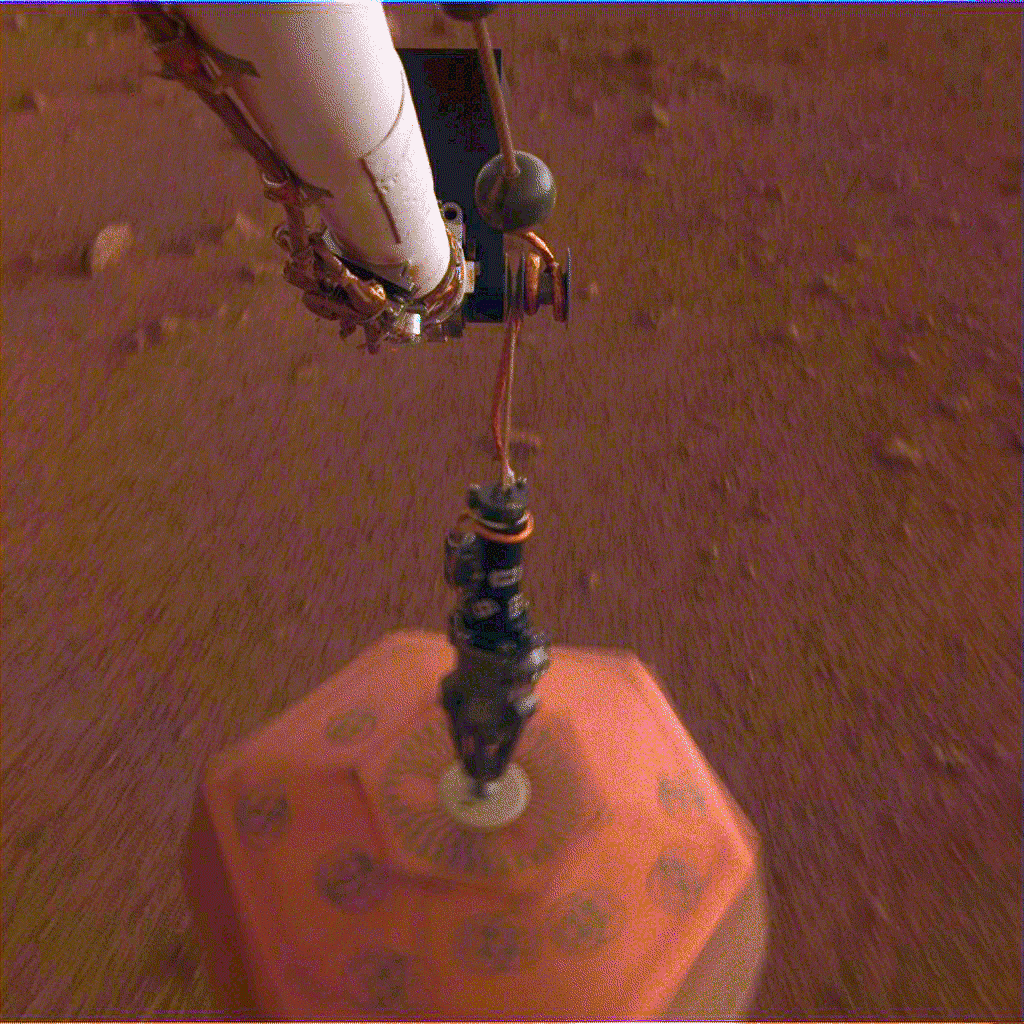This self-portrait above was taken by NASA’s InSight lander using a camera attached to its robotic arm. It’s a composite image made up of 11 shots joined together to show the lander perched on the Elysium Planitia, a broad plain that straddles the Red Planet’s equator where InSight has been positioned since successfully landing in late November. You can see the full InSight selfie here.
The InSight team has already manoeuvred the lander's seismometer onto the planet's surface, and a heat probe will soon be positioned in the surrounding area in order to begin taking measurements.

“The near-absence of rocks, hills and holes means it’ll be extremely safe for our instruments,” said InSight’s principal investigator Bruce Banerdt. “This might seem like a pretty plain piece of ground if it weren’t on Mars, but we’re glad to see that.”
InSight’s mission is to give the interior of the planet the equivalent of a full-body health check. It will measure Mars’s ‘pulse’ by monitoring the frequency and magnitude of the seismic activity (otherwise known as ‘Marsquakes’) and check its temperature by keeping tabs on the heat flow beneath the planet’s surface.
It’s hoped that the data collected will help the researchers to figure out how rocky planets, such as Earth and Mars, were formed. Here on Earth, most of the evidence has been erased thanks to the movements of tectonic plates over billions
of years. Once operational, InSight will continue to collect data for 709 sols – Martian days – the equivalent to 728 Earth days.
Be sure to listen to our episode of the Science Focus Podcast, where we speak to Bruce Banerdt, about the project’s history, its objectives, the technology it will be using, and what studying the internal structure of Mars can teach us about the formation of planets in general.